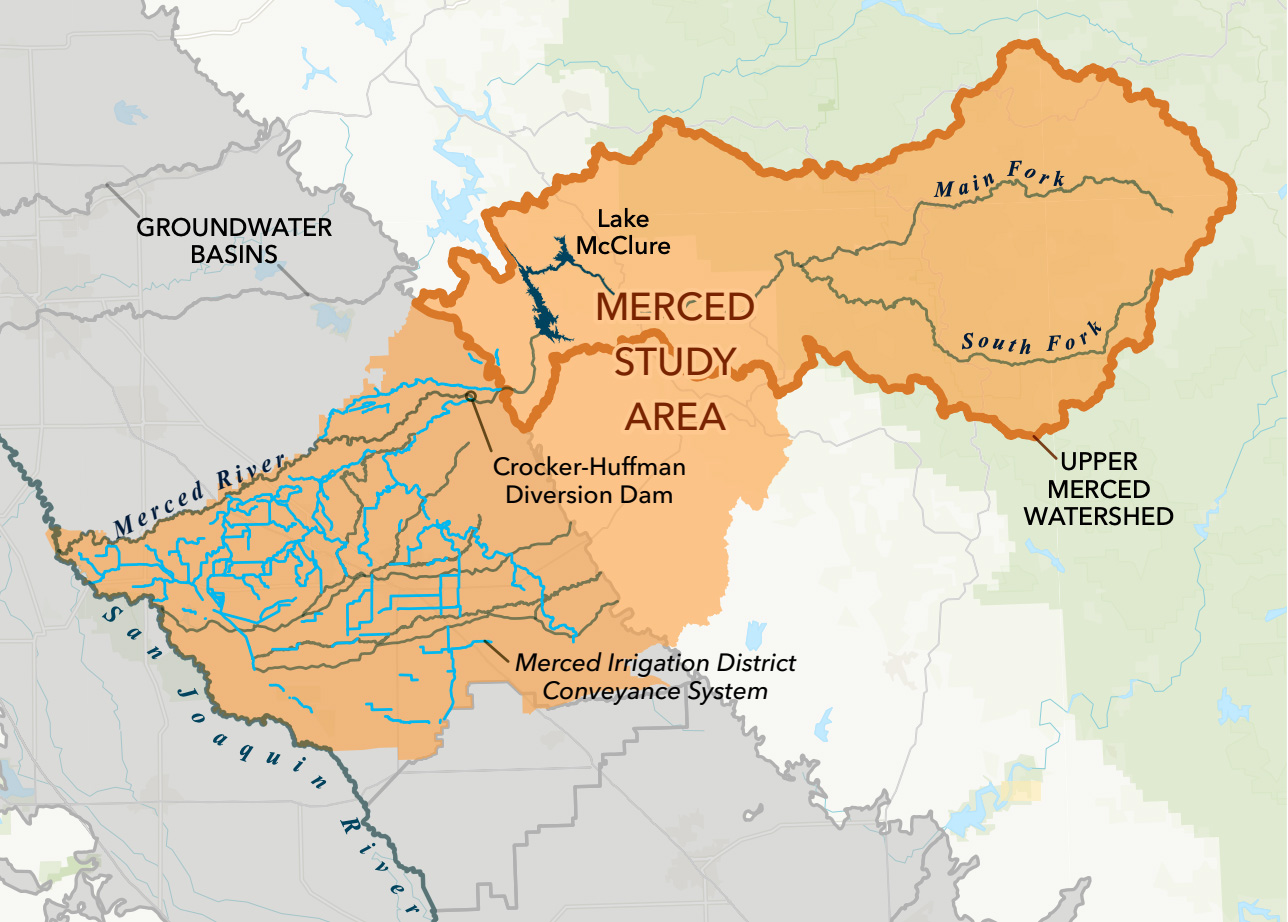From Runoff to Recharge
This site is under development. Stay tuned for more information on how to practice groundwater recharge in California, and check out the resources below!
Groundwater Recharge Assessment Tool (GRAT) Viewer
The GRAT public layer viewer is a map based tool that allows any user to view the public data used in GRAT. It requires no account or user log-in. It is important to note that the more extensive full functionality of GRAT, which uses significant proprietary data from each water district, can only be accessed by users from each district or GSA for their use in making resource management decisions.
See the GRAT Viewer Viewer instructionsFrom Runoff to Recharge StoryMap
Practical strategies for how to manage and broaden recharge benefits for communities, ecosystems, agriculture, and flood risk reduction.
See the StoryMapWebsites
Flood-MAR Hub
Flood-MAR is an important climate change adaptation strategy that can help California better prepare for and manage extreme events like floods and drought.
Water for the Future
Sustainable Conservation works with the people who drink, manage, and irrigate with groundwater to implement on-farm recharge and build large-scale watershed modeling across the Central Valley.
Earth Genome GRAT site
Earth Genome and partner Sustainable Conservation developed GRAT to help secure the California’s central industry and saving some of its key exports grown virtually nowhere else in the U.S. — like almonds.
Earth Genome siteMerced River Watershed Flood-MAR Reconnaissance Study
To better understand climate vulnerabilities and how to address them, the California Department of Water Resources conducted a three-year Merced study in partnership with Merced Irrigation District as a proof of concept to explore the effectiveness of Flood-MAR to concurrently reduce flood risk, improve water supply, and enhance ecosystems in the Merced River watershed. This study is an exploratory watershed-scale analysis to develop and test analytical methods and models, assess climate change vulnerability, and evaluate adaptation strategies.
Read the Study